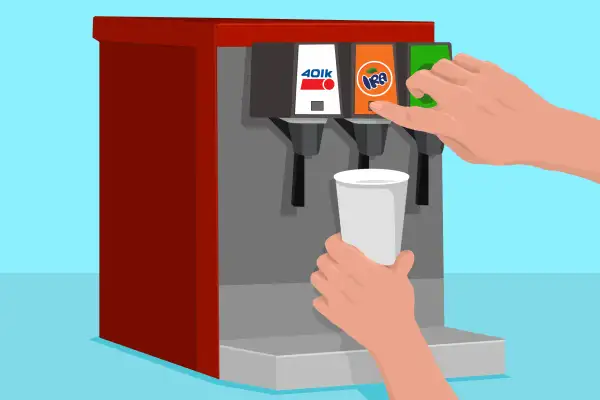IRAs Offer You More Flexibility for Early Withdrawals Than 401(k)s

The golden rule of retirement planning is to leave your nest egg alone until you're retired. But life happens, and if you find yourself in need of cash, it pays to know the difference between an IRA and a 401(k).
Traditional IRAs and 401(k)s are tax-deferred savings accounts that have strict rules for when you can and can’t take your money out. The IRS will slap you with a 10% penalty if you withdraw any of your money before age 59 ½ unless you are using the money for certain kinds of approved expenses (ones that generally fall into the "big life events" or "emergency" categories).
And that's where IRAs have an advantage over 401(k)s, some advisors say. IRAs give you more flexibility for early withdrawals should you ever need one. Major life milestones like buying your first home are times when it may make sense to take a penalty-free early withdrawal from your IRA. Sheryl Garrett, certified financial planner and founder of the Garrett Planning Network, used money from her own IRA to buy a second property that provides her with supplemental income.
Generally, you should exhaust your other options before dipping into your retirement savings for anything other than, well, retirement. But if you can’t rely on regular savings or a loan from a family member, seriously consider the pros and cons of an early withdrawal (which is separate from a financial hardship exception).
One big con? Distributions from traditional IRAs are subject to income tax, so keep your current tax bracket in mind to calculate how much in taxes you'll owe on your withdrawal (ROTH IRAs have different rules). Also, when you take money from your retirement account, you miss out on any gains that money would have made had it remained in the stock market. If you don't replace the money quickly, that compounds to a big loss over time. That's why it's crucial to repay yourself as quickly as possible.
"Credit card people will come knocking on your door and make you repay that debt, but no one is going to knock on your door and make you repay yourself the money you took out of your IRA," Garrett says. The best way to build up your retirement nest egg is to have the money automatically deposited there from your paycheck every month, so if you end up withdrawing money from your IRA prematurely, you can put it back in on the same schedule, Garrett suggests. (You can direct your bank to make automatic contributions to your IRA on payday, for example.)
Here are three of the major expense categories where you're allowed to take money out of your IRA penalty-free, but that don't apply to your 401(k). That said, if your company offers a 401(k), you should have one of those, too, and you should definitely take advantage of your company match:
First Time Home Purchase
You can withdraw up to $10,000 from your IRA if you qualify for the first-time home buyer exemption, which isn't very hard: you can be considered a first-time home buyer if you or your spouse have not owned a principal residence in two years. You have to use your early disbursement within 120 days, so plan accordingly.
Health Insurance Premiums
If you become unemployed, you can dip into your IRA to pay your health insurance premiums.
Higher Education
IRA money can also go towards higher education to pay for things like tuition, room and board and other related educational fees. Using the money to pay the educational expenses of a family member like a spouse or child also qualifies for an early disbursement. If you're short on cash, it might be better to take a few thousand dollars from your IRA to pay for textbooks rather than put that charge on a credit card with a high interest rate, Garrett says.
You can find a more detailed list of qualified early withdrawals on the IRS website.